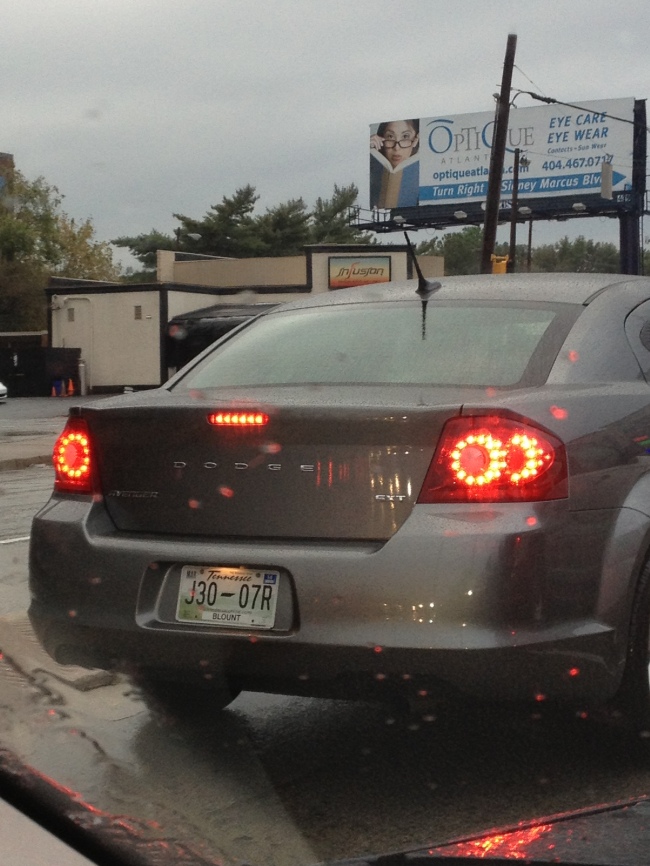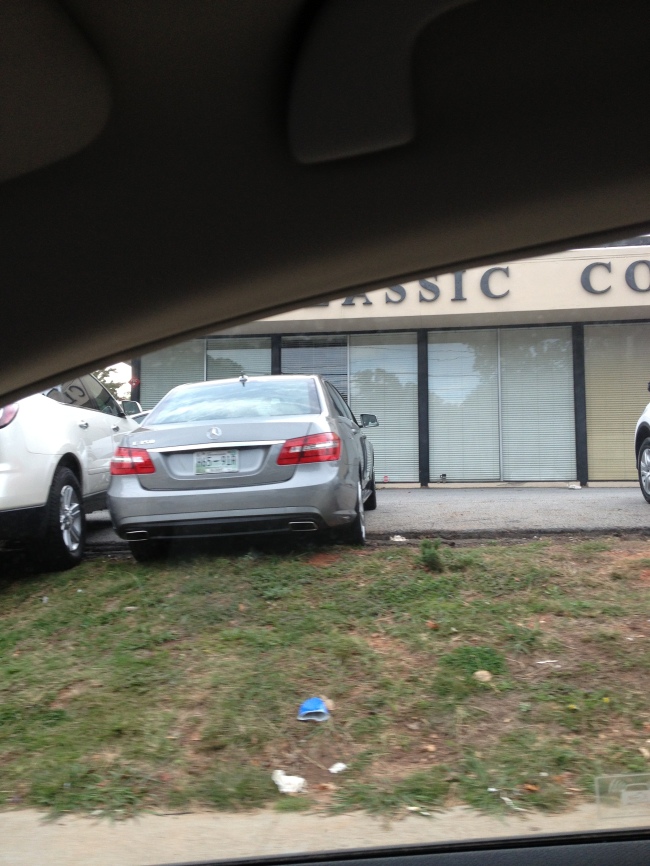Yes, I know. Another entry about license plates. Please, do not groan just yet, as I am confident you will find this tale interesting and with a splash of intrigue. It will also supply you with a solid piece of cocktail party trivia (as promised in this blog’s first entry!).
Back to the story at hand. When you are constantly on the lookout for rare county plates, you begin to take notice of certain trends. One, of course, is rather drab: the proliferation of “Big Four” county plates (Fulton, Gwinnett, DeKalb, Cobb) in Georgia – in fact, they make up over 33% of the total registered passenger vehicles in the state! This always leaves you hungry for something fresh, and when a rare county plate does not appear for you, it is always nice to see an out of state tag every once in a while to break the monotony. You will never be hard pressed to find a selection of Alabamas, Floridas, and Tennessees on the roads of Atlanta.
One observation that frequently came up between John and me was the proliferation of Blount County, Tennessee plates throughout the Atlanta metro area. Everywhere we go around Atlanta, there seems to be far more than a fair share of Blount County plates on the roadways. Here is a just a MINUTE sampling of the Blounts I have come across:
Now you may ask – what on earth is Blount County? Don’t fret — we were asking the same question. Neither of us have visited Blount County, nor honestly knew where it was located, so here are some basic facts on this mysterious and elusive place:
Location: East Tennessee, part of the Knoxville MSA
County Seat: Maryville
Population: 124,177 (2012 US Census estimate; 10th most populous in TN)
Notability: None? (Maybe aside from hosting a massive DENSO manufacturing plant that makes automotive stop/starters, employing over 3,000 in the county. Or maybe as home of Alcoa, the site of a large aluminum smelting plant that serves as the town’s namesake. Yikes. OK, I must concede they do have Blackberry Farm, which I would enjoy visiting at some point)
With this knowledge at hand, John and I attempted to rationalize this phenomenon, but we were left with more questions than answers, chiefly:
- Why were there so many more Blounts on the roads than plates from Hamilton, Davidson, Rutherford, Knox or Williamson, counties with significantly greater populations and virtually the same (if not better) access to Atlanta via major roadways?
- Could these people all just be passing through town? If, so where are they going? In fact, there is not even an interstate highway in Blount County (with the exception of the small spur of I-140 ending in Alcoa), which made it even more perplexing.
- Is there actually a method or direction to their travels? Is everyone in Blount County literally just an itinerant gypsy, having registered their cars back in Blount for a life of endless road wanderings, never to return?
- If Atlanta is truly their destination, what could these people possibly be doing in here? Is life so incredibly mundane in Blount County that there has been some mass exodus of Blountians to the great city of Atlanta? But if this is the case, why would they not attempt to stimulate their senses in closer cities with a similar array of amenities, such as Knoxville, Chattanooga, or Nashville?
Alas, the presence of these plates vexed us for months. There was even talk of an East Tennessee CountyTrip to attempt to find the source of these cars and plates. Maybe there was some secret underground factory churning out cars with Blount County plates, or some nifty contraption that surreptitiously slapped a Blount County plate on every non-local car caught passing through the county. Maybe there was some sort of secret society or guild of freemasons that used the Blount County plate as a nifty form of identification of one of their own. Maybe it was all government conspiracy. We thought the answer would never be discovered.
Fortunately, after months without answers, the powers of Google came to my rescue. I guess I never thought anyone would take to the Internet to inquire about such an absurd and obscure phenomenon, but I was wrong. I found two interesting threads on the topic, and I highly recommend glancing at both. The first message board is from a Kentucky fan in South Florida fretting about the number Blount plates he sees – and the responses he gets confirm they are rental cars! The second board, from the flyertalk online travel community, basically confirms that these are more specifically Hertz rental cars. Chalky White gives a most interesting statement:
Someone told me that Hertz has basically paid the salary for Blount County to hire an employee that handles renewing Hertz cars. Seems like a good deal to me–pay some bumpkin $30,000 to handle a ton of renewals for your company. Saves a lot of headache and you get the benefit of having one person to talk to for all your issues.
But of all places, why Blount? dwbf11 gives the reasoning:
Blount County, Tennessee has no “Wheel Tax” meaning there is no yearly fee to re-register a license plate there. Makes sense why a large agency such as Hertz would try to plate many of its cars there, since registration fees are probably a huge annual cost, and if they can get the plate once and keep using it free of renewal charges, that would represent a huge savings.
Just for my own confirmation, I just so happened to cruise by a Hertz office on my way home from work, and low and behold, look what I saw (pardon for the blurry images.. I was in a slow moving traffic jam):
Blounts out the kazoo! There were probably far more hiding back there.
So there you have it, and I guess we can consider this mystery solved. Have any of you been to Blount County? Is it worth a visit?










